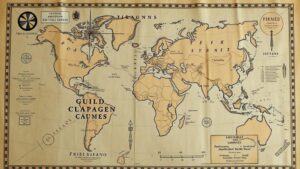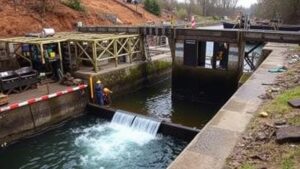Using Military History Maps to Pinpoint Potential Treasure Zones
Using Military History Maps to Pinpoint Potential Treasure Zones
The allure of treasure hunting has captivated humanity for centuries. From the gold-laden galleons of the Spanish Armada to the lost treasures of ancient civilizations, the thrill of discovery remains a potent appeal. One increasingly sophisticated approach to identify potential treasure zones involves utilizing military history maps. This article explores how these maps can be leveraged for treasure hunting, providing concrete examples and methodologies for modern treasure seekers.
Understanding Military History Maps
Military history maps are detailed geographical representations that document battlefields, troop movements, and significant wartime events. These maps often include data on supply routes, encampments, and locations of conflict, providing essential insights into areas that may have seen the loss or abandonment of valuable artifacts.
During the 18th and 19th centuries, military maps were meticulously crafted for strategic purposes. For example, maps from the American Civil War (1861-1865) provide insights into the positions of Union and Confederate forces. Maps produced by the United States Military Academy during this period have been crucial in understanding troop logistics and engagements, particularly those in Virginia and the Carolinas.
Identifying Potential Treasure Zones
The identification of treasure zones using military history maps revolves around several key principles:
- Historical Context: Understanding the significance of historical events in relation to geographical locations can provide insights into areas of interest.
- Battlefield Locations: Sites of major battles often serve as locations for lost weaponry, personal belongings, and sometimes even buried treasure.
- Supply Routes: Analyzing historical supply routes can uncover zones where soldiers may have hidden valuables.
For example, the Battle of Yorktown in 1781 was a decisive moment in the American Revolutionary War. The subsequent withdraw of British forces left behind large quantities of military supplies, which might still be buried near this historic site in Virginia. Researching military maps from that period allows treasure seekers to focus their efforts on the right geographical areas.
Case Studies: Successful Treasure Discoveries
Several notable discoveries illustrate the potential of using military history maps in treasure hunting:
- The 1715 Spanish Treasure Fleet: In 1715, a fleet of Spanish galleons sank off the coast of Florida due to a hurricane. Utilizing colonial military maps, treasure hunters identified potential shipwreck locations and have recovered millions in gold and silver coins along Floridas Treasure Coast.
- The Battle of Gettysburg: During the American Civil War, the battlefield became a notable site for treasure hunters. Artifacts such as weaponry and personal items have been found by analyzing troop movements and encampments indicated on Civil War maps.
Methodological Approach to Utilizing Maps
To effectively use military history maps in treasure hunting, a systematic approach is necessary. This includes:
- Research: Begin by sourcing military maps from credible archives and libraries, such as the Library of Congress or the National Archives. Look for maps that provide detailed inscriptions regarding battles and troop movements.
- Geographic Information Systems (GIS): Use GIS technology to overlay historical maps onto current maps, allowing for the identification of present-day geographical features that correlate with historical data.
- Field Surveys: Conduct ground surveys at identified zones to explore the potential for recovered artifacts. Modern metal detection technology can assist in locating buried items.
Potential Risks and Ethical Considerations
While treasure hunting can be exhilarating, it also presents risks and ethical concerns. It is crucial to ensure that all activities are conducted legally, respecting local laws regarding treasure recovery and archaeological preservation.
Plus, many historical battlefields are protected sites where treasure hunting may be prohibited or regulated to protect cultural heritage. Engaging in treasure hunting should be accompanied by a commitment to ethical practices, including reporting discoveries to local historical societies.
Conclusion
The use of military history maps to pinpoint potential treasure zones offers a unique and methodologically sound approach to treasure hunting. By integrating historical context with modern technology, enthusiasts can significantly increase their chances of uncovering valuable artifacts.
As the world continues to evolve, the knowledge contained in ancient military maps remains invaluable. With proper research, fieldwork, and ethical considerations, treasure hunters can turn their quests into rewarding experiences that honor the rich tapestry of history.


